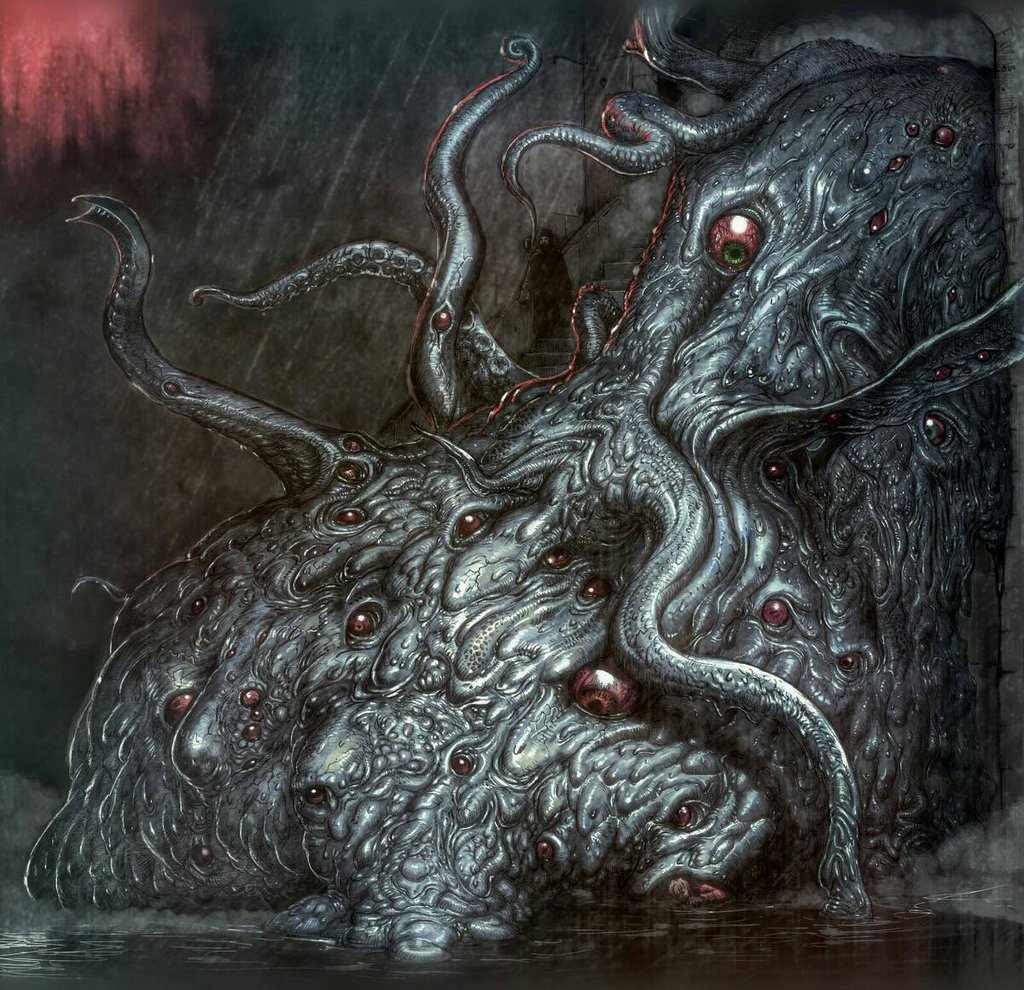Scaring Dungeons & Dragons players proves hard. Unlike the ordinary folks played as characters in a frightful game of Call of Cthulhu, characters in D&D boast heroic powers that allow them to defeat the most fearsome threats, at least eventually.
Most campaigns begin with the assumption that the dungeon master won’t give the characters more than they can handle. Fifth edition’s first hardcover adventure, Hoard of the Dragon Queen, starts when 1st-level adventurers reach a town under attack by an adult blue dragon—an insurmountable threat. Instead of sensibly assuming that entering the town would lead to electrocution, and then choosing to flee in terror, the new party must go charging in for the adventure to begin. When characters always meet threats their characters can overcome, players never see reason to fear.
However, if players understand that their choices led them into trouble, then they can reach a rare moment of panic.
Blogger Ben Robbins writes “The players will embrace the idea of being afraid and impressed by a threat when they brought it upon themselves. If the threat comes at them because of nothing the players did, the players rightly feel like the situation is a little unfair and are not as willing to buy into it.”
If the party hears whispers from the darkness and chases blindly toward the noise, then they deserve the panicked moment when monsters close from every direction.

Shoggoth by Nottsuo – nottsuo.deviantart – www.pixiv.net – twitter.com/nottsuo, CC BY 3.0 via Wikimedia Commons
In a seminar, Call of Cthulhu designer Sandy Petersen builds on this idea with his Creepy Stuff Rule. “What you don’t want to do is say, ‘You open the door an there’s a shoggoth,’ and then the players all get killed.” Instead, give players three chances to survive the monster.
- A hint. In the case of the shoggoth, that might be a trail of ooze and a reptile-house smell outside the sewer entrance. “Then the players might say, ‘We’re not afraid. We’re going in.”
- Solid evidence of danger. “You find the sewer worker’s body. His head has been sucked off and it’s covered in slime.” Now the player’s see an obvious sign of danger. “Anything that sucks a guy’s head off has got to be a problem.” Here the players can still turn back.
- The Monster. “Emerging from the nexus of sewers is a giant, protoplasmic blob covered with eyes and organs constantly spawning.” The players may still have time to say, “Nope,” and then slam the door, although with a shoggoth probably not.
“At this point, any player who is killed can’t blame you. You gave them three warnings. Always have the players blame themselves when they get killed. Even in Call of Cthulhu, the players should feel like it’s their own fault.”
Justin Alexander writes, “If the players externalize that blame to the GM, it becomes external not only from themselves but also from the game world. This robs the events of meaning, and without meaning there can be no horror.”
Petersen recognizes that players may feel compelled to chase obvious danger to finish the adventure. In his game, players embrace that expectation. “If they weren’t willing to get their heads sucked off, why would they play Call of Cthulhu?”
However, few D&D campaigns expect characters to survive deadly treats to finish an adventure, so to earn a scare, D&D players must choose danger over other leads that could also bring success.
A typically reckless and impulsive D&D party may see extra risk as an invitation—at least until that oh-shit moment. Look for opportunities when the players’ choices might lead to extraordinary danger, and then fuel their fears. If you know your players, you may even know ways to tempt them into bad choices.
Rather than actually slaughtering the party, you probably favor suggesting a lethal threat without actually delivering. That means keeping the true size of the threat unknown and unseen. In the Campaign Sourcebook and Catacomb Guide, Jennell Jaquays writes, “Rely on the perceptions of the characters. Describe what seems to be seen, what may have been heard, or a faint odor in the air. Let the players draw their own conclusions. When the players don’t know what their characters are up against, they begin to feel the creeping chill of fear.
“Keep the players guessing, keep them on edge, even make them afraid—they’ll love you for it.”
Related: The Story of the Impossible Luck that Leads D&D Parties to Keep Facing Threats They Can Beat.




